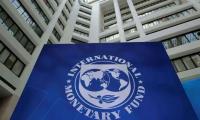BEIJING: Habib Bank Limited (HBL), which opened its branch in Urumqi, is eyeing opportunities connected with the China-Pakistan Economic Corridor (CPEC), a key component of the Belt and Road Initiative.
Xinjiang is the starting point of the CPEC, which links the region with the Gwadar Port in Pakistan.
The CPEC is estimated to draw infrastructure investment of $45 billion. "We have always been very active on the frontlines of the CPEC," a top bank official said on Tuesday.
The Bank of Beijing has also established its branch last week in Urumqi, the capital of Xinjiang. According to experts, domestic and foreign financial institutions have been pouring into Northwest China's Xinjiang Uyghur Autonomous Region in recent months, looking for opportunities under China's "One Belt, One Road" (B&R) initiative. There are abundant opportunities in the infrastructure sector, as major investment is planned, and that will attract even more companies into Xinjiang.
Wang Yu, a top executive at the Bank of Beijing branch in Urumqi, said that the bank first came to Xinjiang in 2015 to seize the major opportunities of the Belt and Road.
Yu said that the bank has been involved in financing some infrastructure projects in Urumqi. These are just the latest examples of financial institutions entering Xinjiang to lay the foundations for opportunities that could stem from the B&R initiative, he added.
At the end of 2016, there were 144 financial institutions in the region, spanning 15 different categories, including personal and investment banking.
Xinjiang's banking sector raised 293.8 billion yuan ($42.73 billion) for B&R projects in the region in 2016, up 16.18 percent.
Ma Jie, dean of the entrepreneurship school at the Xinjiang University of Economics, said that Xinjiang's major plan to improve infrastructure as part of the B&R initiative will attract even more companies.
"Most of the opportunities are in the infrastructure sector now because that's what the government is focused on," Jie said, pointing to a regional government target of 1.5 trillion yuan investment in fixed assets in 2017.
In addition to infrastructure, other sectors such as equipment production will also be the focus of the government to support the B&R initiative and the local economy, he said.
Xinjiang's GDP grew 7.6 percent in 2016, higher than the national average of 6.7 percent, the Xinjiang regional government said on February 13.
In this picture, the PCJCCI logo can be seen on September 1, 2022. — Facebook/Pakistan China Joint Chamber of...
The logos of the World Bank and IMF. — AFP FileNEW YORK: The United States is the MVP of GDP. That was the...
A security guard sits in front of a wall with signs and slogans at the operation building at the Pakistan Steel Mills ...
A worker cleans the entrance to the headquarters of Bank Indonesia, the nation's central bank, in Jakarta, Indonesia....
The MCB's logo is seen on a wall outside the bank's head office. — MCB websiteKARACHI: MCB Bank Limited on...
Stack of Rs5,000 and Rs1,000 notes. — AFP/FileKARACHI: The rupee lost ground against the dollar in both currency...







